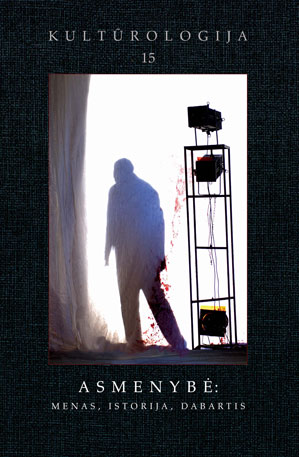Simbolių ir metaforų transformacijos vizualioje M.K.Čiurlionio kūryboje ir rašytiniame palikime
Transformations of Symbols and Metaphors in the Visual and Verbal Oeuvre of M.K.Čiurlionis
Author(s): Nida GaidauskienėSubject(s): Cultural history
Published by: Lietuvos kultūros tyrimų
Keywords: symbols; metaphors; M.K.Čiurlionis
Summary/Abstract: Using comparative research methodology, this article discusses symbols and metaphors in Čiurlionis' paintings and writings. The categories of symbol and metaphor belong to the same paradigm and both express idealistic content. Though in art a symbol represents a higher level of abstraction, metaphorical constructions and a variety of contexts can give new meanings to symbols. The earliest paintings of Čiurlionis can be linked to narrative psychological symbolism. Meanings of symbols are limited to the titles of his paintings and to the sequence of the narrative stories. Around 1906 in the paintings of the artist, we see a shift from symbol to metaphor. The touch of the brush becomes freer; new color codes are used summaries with new abstract motifs and the esthetics of silence appear to open new possibilities for interpretation. In the latest period of Čiurlionis' painting, symbolism is further expressed in his fairy-tale cycles and metaphysical paintings. Metaphorical constructions are used in his "Sonatas". Linear structure in his painting, rhythmical change of elements, and the effect of the multiperspective, which is achieved by using different layers of transparency and different points of view, help to create a metaphor of a musical text and induce interpreters to use the terminology of metaphors. The few remaining Čiurlionis' writings show that his metaphorical thinking resembles the Neo Romantic esthetics. In his letters, thoughts flow freely as well as word-images so common to his paintings. In the earliest poetic texts Čiurlionis is using symbols from folk-art and only around 1906 the structure of the text becomes more defined and motifs of the pause and silence start to play an important role. The verbal poems "The Sea" and "The Sonata" are written using musical architectonics and they are closest to the expression of the Symbolism. About ten monographs are written to discuss the art of Čiurlionis along with many studies and articles. Even so, there is still a place for interpretation and a phenomenological approach.
Journal: Kultūrologija
- Issue Year: 2007
- Issue No: 15
- Page Range: 61-80
- Page Count: 20
- Language: Lithuanian

